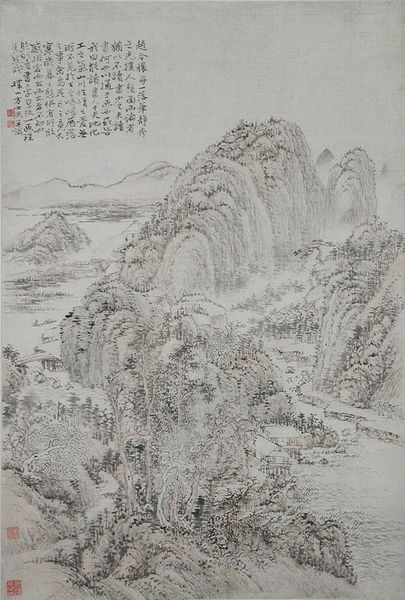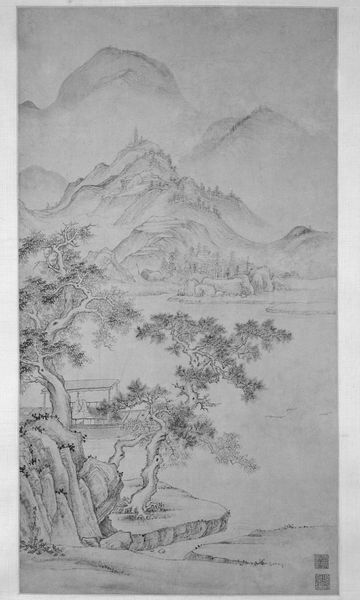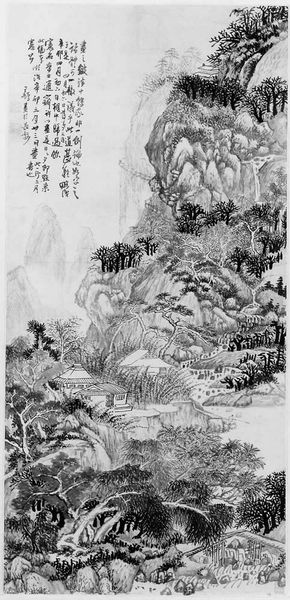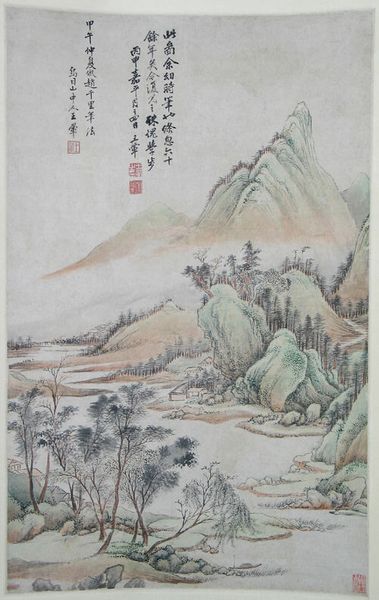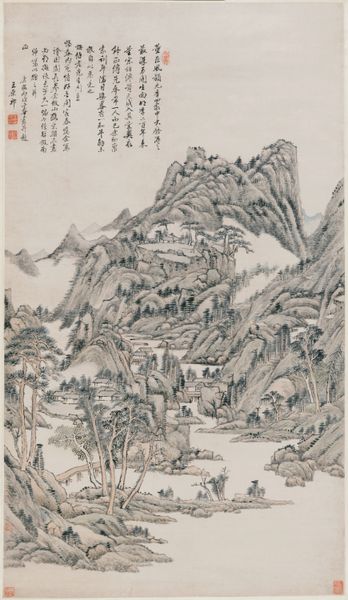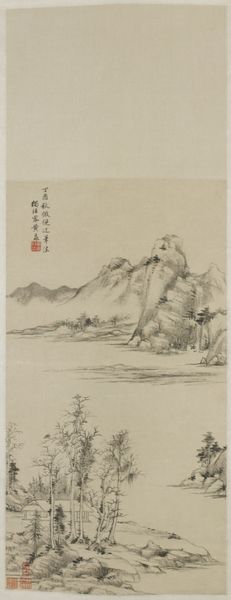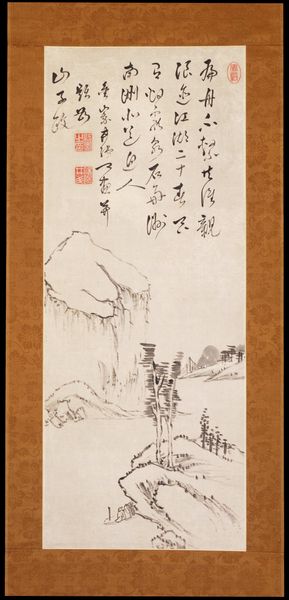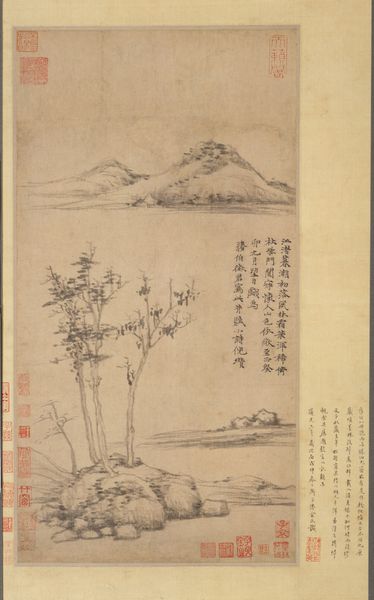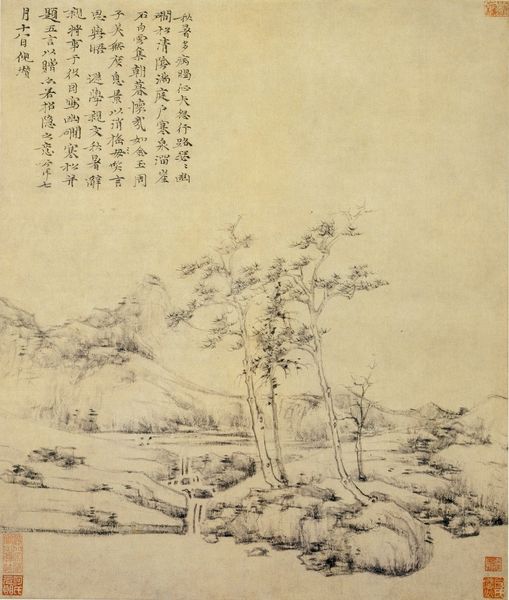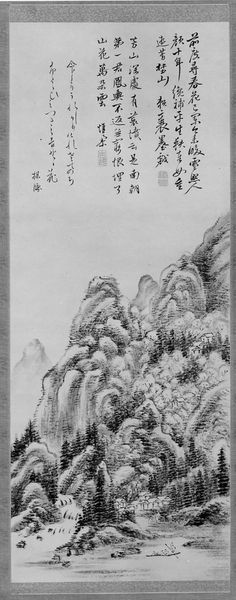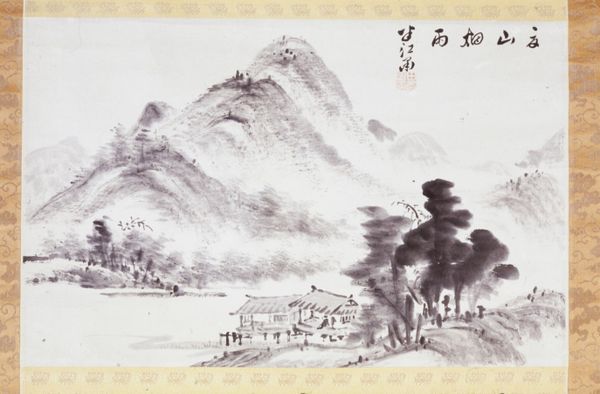
Fishing Recluse by an Autumn Grove (秋林漁隱圖) c. late to early 17th century
0:00
0:00
painting, paper, ink
#
painting
#
asian-art
#
landscape
#
paper
#
ink
#
orientalism
Dimensions: 102.8 × 34.9 cm (40 1/2 × 13 3/4 in.)
Copyright: Public Domain
Curator: Sheng Mao's "Fishing Recluse by an Autumn Grove," from the late 16th or early 17th century, rendered in ink on paper, hangs before us. A landscape of misty mountains and serene waters. Editor: My initial impression is one of melancholic beauty. There's a distinct sense of solitude and reflection conveyed by the soft brushstrokes. The lack of vibrant colors, limited to grayscale, contributes to its introspective nature. Curator: Observe the delicate balance achieved through the varying ink washes. Notice the foreground's meticulous details in the trees contrasting against the more atmospheric treatment of the distant peaks. There is an undeniable formal elegance. Editor: Elegance, yes, but also consider the socio-political climate of that time. The "recluse" is a powerful figure – often someone disillusioned with the ruling power, seeking refuge in nature to maintain integrity and perhaps voice dissent indirectly. Was Sheng Mao aligned with the intellectual currents rejecting Ming Dynasty governance? Curator: It's a fascinating perspective. Perhaps the artist sought escape from a world marked by strife through careful orchestration of compositional elements like depth and line, directing our eye into a tranquil scene removed from everyday concerns. Editor: The scale here implies a societal hierarchy privileging monumental, inaccessible landscapes. I’d venture to say that even the act of 'recluse fishing' is afforded primarily to landowners and nobles. It makes me wonder about who is granted the time and economic space for self-reflection, a luxury or right far from the reach of the peasant class. Curator: The inscription might help shed more light. While illegible to us without close translation, inscriptions often detail the artist's intentions, dedications, or even related poems, enriching our appreciation through symbolic nuance. Editor: Right. Considering the power dynamics inscribed within supposedly apolitical art forces a wider reading, challenging our notion of 'landscape' in general. "Fishing Recluse" opens to new interpretive fields when one sees the reclusion of art as, at least sometimes, implicated in struggles for authority and change. Curator: Indeed, this highlights how formal elements within a composition establish unique tensions when studied as they relate with historical framework, adding interpretive complexity. Editor: It really exemplifies how one piece becomes the focal point through which we can observe questions on societal hierarchy, access, and opposition embedded subtly within tradition.
Comments
No comments
Be the first to comment and join the conversation on the ultimate creative platform.
